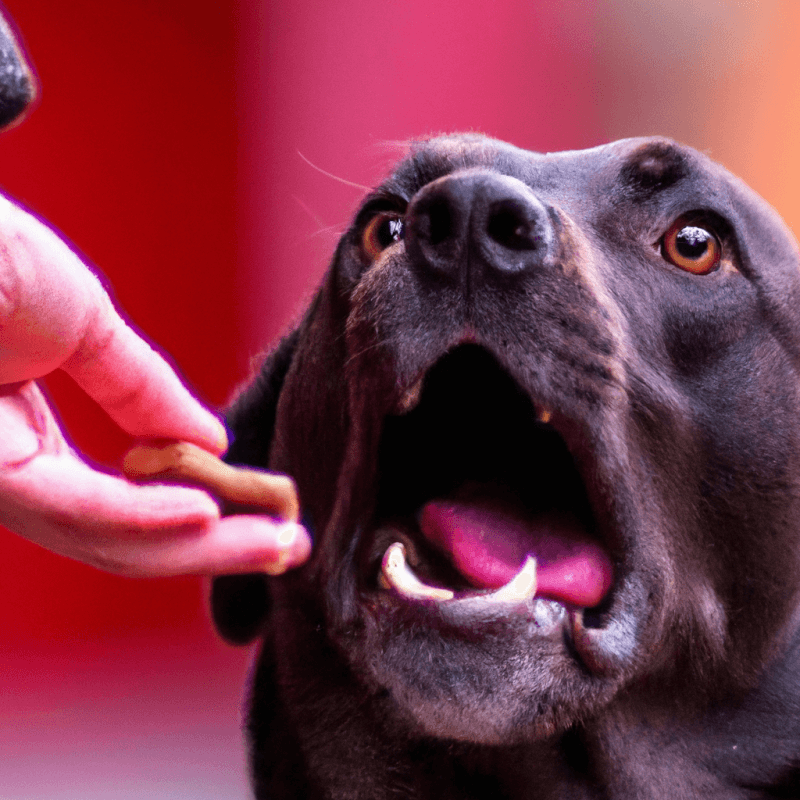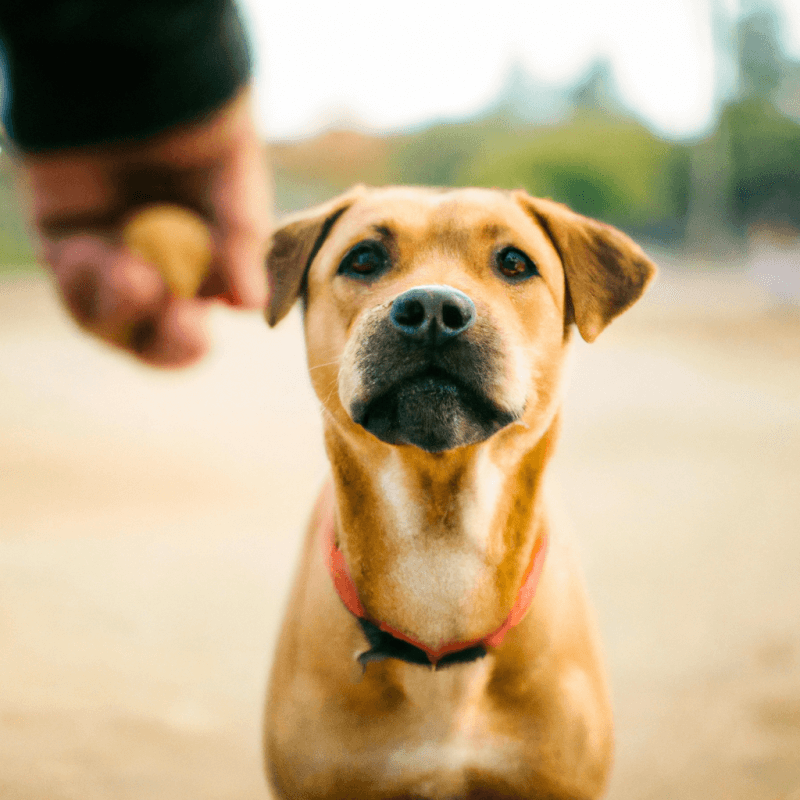Are you frustrated with your pet’s disobedience? Do you dream of a well-behaved furry companion who listens to your every command? If so, you’re in luck! In this article, you will discover effective strategies to train your pet and improve their obedience. Whether you have a mischievous cat or a rambunctious dog, these tips and tricks will help you create a harmonious and well-disciplined household. So, say goodbye to frustration and hello to a happier, more obedient pet!
Understanding the Importance of Training
Training is a crucial aspect of owning a pet. It goes beyond teaching basic commands; it helps establish a clear hierarchy, builds trust and communication, and ensures the safety and well-being of both you and your furry companion.
Ready for Cat Trivia?
Test your knowledge about cats!

Establishing a Clear Hierarchy
Effective training begins with establishing a clear hierarchy within your household. Dogs, for example, are pack animals that thrive in environments where they understand their place in the hierarchy. By consistently and gently asserting yourself as the leader, you establish a sense of order and stability that allows your pet to relax and follow your guidance.
Building Trust and Communication
Training provides an excellent opportunity to build a strong bond of trust and understanding with your pet. Through positive reinforcement and consistent communication, you can establish an environment where your pet feels safe, loved, and secure. This trust and open line of communication will enable you to effectively convey your expectations and commands.
Ensuring Safety and Well-being
Training plays a vital role in ensuring the safety and well-being of your pet. By teaching them basic obedience commands such as “sit,” “stay,” and “come,” you can prevent potentially dangerous situations. For example, a well-trained dog who reliably responds to “come” can be kept out of harm’s way by preventing them from running into traffic or other dangerous situations.
Setting Clear Expectations and Boundaries
When it comes to training, setting clear expectations and boundaries is essential. This not only helps your pet understand what is expected of them but also establishes a sense of consistency and structure in their daily lives.
Defining Rules and Commands
Before you start training, take the time to define the rules and commands you want your pet to follow. This could include commands like “sit,” “stay,” “down,” and “leave it.” Make sure these rules are reasonable and consistent, and ensure that all family members are aware of them to avoid confusion or conflicting signals.
Consistency and Repetition
Consistency and repetition are key factors in successful training. Ensure that you, your family, and anyone else involved in your pet’s life use the same commands and enforce the same rules consistently. Reinforce these expectations through regular repetition, as this helps your pet understand what behaviors are desired and expected.
Using Positive Reinforcement
Positive reinforcement is a highly effective training technique. By rewarding your pet’s desirable behaviors with treats, praise, or playtime, you can reinforce those behaviors and motivate your pet to repeat them. This positive approach helps create a loving and nurturing learning environment for your pet, promoting obedience and a closer bond between you and your furry friend.

Basic Obedience Training Techniques
Basic obedience training is an essential foundation for your pet’s overall obedience and well-being. It includes commands such as “sit,” “stay,” and “come.”
Teaching Sit and Stay
The “sit” command is one of the most basic and important commands for a well-behaved pet. To teach your pet to sit, hold a treat close to their nose and slowly move it up and back. As their nose follows, their backend should lower into a sitting position. As soon as they sit, say “sit” and reward them with the treat and praise. Repeat this process several times until they associate the command with the action.
Once your pet has mastered sitting, you can move on to teaching them to “stay”. Start by commanding them to sit, and then hold your hand out in front of you, palm facing towards them, and say “stay.” Take a small step backward. If your pet stays in the sitting position, reward them with a treat and praise. Gradually increase the distance and duration of the “stay” command over time, reinforcing their understanding and obedience.
Training to Come When Called
The “come” command is crucial for your pet’s safety and is taught using positive reinforcement. Begin by kneeling down with your arms open wide, calling your pet’s name followed by “come,” in a happy and inviting tone. As they come towards you, reward them with a treat and praise. Repeat this process, gradually increasing the distance between you and your pet. Always remember to reward them when they respond correctly, reinforcing their understanding of the command.
Teaching Leave It
The “leave it” command is beneficial in preventing your pet from grabbing or chewing items that could be dangerous or inappropriate. Start with a treat in your closed fist, allowing your pet to sniff and lick it. Say “leave it” firmly and wait for them to lose interest. Once they do, offer them a different treat from your other hand, using positive reinforcement when they take it. Repeat this exercise, gradually phasing out the need for a treat in your closed fist until your pet responds reliably to the verbal command.
Addressing Specific Behavior Issues
Every pet may face specific behavior issues, but with patience, understanding, and the right training techniques, these issues can be addressed effectively.
Dealing with Barking or Whining
Barking or whining can be frustrating for both pet owners and neighbors. Understanding the underlying causes of these behaviors is essential in tackling them successfully. For instance, your pet may bark due to boredom, fear, or a need for attention. Identify the triggers for their barking or whining and work on redirecting their attention through positive reinforcement. Teach them alternative behaviors such as “quiet” or “speak” on command, creating a healthier outlet for their energy and communication.
Managing Aggression or Dominance
Aggression or dominance issues require careful handling and professional guidance. Seek the assistance of a professional trainer or behavioral therapist who can help identify the root cause and develop a training plan specific to your pet’s needs. It is crucial to address and manage these issues promptly to ensure the safety of both your pet and those around them.
Eliminating Destructive Chewing
Destructive chewing is a common issue among pets, especially during their teething phase. It is essential to provide appropriate chew toys and redirect their focus to those items. Consistently reinforce the “leave it” command and provide mental and physical stimulation to keep them engaged. If the behavior persists, consult with a professional trainer or veterinarian to rule out any underlying health issues or anxieties contributing to the destructive chewing.

Understanding Your Pet’s Individual Needs
Every pet is unique, and understanding their individual needs is crucial in tailoring your training methods and approach to their personality, breed, and temperament.
Consider Breed and Temperament
Different breeds and temperaments have varying traits and characteristics that may influence their learning style. For example, some breeds may have a natural inclination towards certain behaviors, such as herding or retrieving. Understanding and accommodating these breed-specific traits in your training can help your pet learn and respond more effectively.
Adapting Training Methods
While some training techniques may work well for one pet, they may not resonate with another. Stay flexible and adaptable in your approach, tailoring your methods to suit your pet’s learning style. Be patient and experiment with different techniques, focusing on what works best for them. Remember, every pet learns at their own pace, and it is important to celebrate their progress, however small.
Providing Mental and Physical Stimulation
Mental and physical stimulation are crucial for a well-rounded, obedient pet. Engage in activities that challenge your pet’s mind, such as puzzle toys or training exercises that require problem-solving. Regular exercise and playtime not only provide physical outlets for your pet’s energy but also strengthen the bond between you and create a more peaceful and obedient companion.
Seeking Professional Help
Sometimes, seeking professional help is necessary to address specific behavioral issues or to refine your training techniques. Professional trainers and behavioral therapists can provide valuable insights, guidance, and personalized training plans for your pet.
Working with a Professional Trainer
A professional trainer can help assess your pet’s behavior, provide expert guidance, and offer hands-on training sessions. They will work with you to identify specific goals and address any challenges or issues you may be facing. Working with a professional trainer ensures that you receive knowledgeable support throughout your pet’s training journey.
Consideration for Behavioral Therapists
In more complex behavioral cases, a behavioral therapist may be recommended. These professionals specialize in addressing deeper psychological or emotional issues that may be driving your pet’s behavior. A behavioral therapist will conduct a thorough assessment and develop a comprehensive treatment plan tailored to your pet’s individual needs.
Joining Training Classes or Workshops
Training classes or workshops offer a structured environment for you and your pet to learn and socialize with others. These group settings provide opportunities for your pet to practice obedience in various situations and under different distractions. Additionally, you can benefit from the guidance and support of an experienced trainer who can provide valuable tips and techniques.

Patience and Consistency
Training requires patience and consistency. It is a gradual process that requires your commitment and understanding of the learning journey.
Understanding the Learning Process
Every pet has their own unique learning style and capabilities. Some may pick up commands quickly, while others may require more time and repetition. Understanding that training is a gradual process and being patient with your pet’s progress is crucial for success.
Consistently Practicing and Reinforcing Training
Consistency is key when it comes to training. Regular practice sessions and reinforcement of learned behaviors help solidify your pet’s understanding of commands. Incorporate training into your daily routines, and make it a positive and enjoyable experience for your pet.
Celebrating Progress and Small Wins
Recognize and celebrate your pet’s progress and small wins throughout the training process. Positive reinforcement and praise go a long way in motivating and encouraging your pet to continue their obedience training journey.
Avoiding Mistakes in Training
In order to ensure effective and positive training experiences for your pet, it is important to avoid common mistakes and pitfalls.
Avoiding Physical Punishments or Harsh Methods
Physical punishments or harsh training methods can have detrimental effects on your pet’s well-being and may cause fear or aggression. Instead, focus on positive reinforcement and rewards to encourage desired behaviors.
Being Patient and Understanding
Frustration or impatience during the training process can negatively impact your pet’s progress. Remember to stay calm, patient, and understanding, especially when dealing with challenging behaviors. Address these behaviors with constructive training techniques and seek professional help if needed.
Avoiding Inconsistencies
Inconsistencies in training can confuse your pet and hinder their progress. Ensure that all family members or guardians involved with your pet’s training are on the same page and use consistent commands and reward systems. Avoid sending mixed signals and stick to the established training plan.

Dealing with Setbacks and Challenges
During the training journey, setbacks and challenges are common. It is important to approach these obstacles with resilience and seek support and advice when needed.
Identifying and Addressing Training Challenges
Identify any recurring challenges or obstacles that may be hindering your pet’s progress. Whether it’s a stubborn behavior or difficulty grasping a specific command, addressing these challenges through modified training techniques or seeking professional guidance can help you overcome them.
Recognizing the Impact of Environment or Health Issues
External factors, such as changes in environment or underlying health issues, can affect your pet’s behavior and training progress. If you notice sudden changes or uncharacteristic behavior, consult with a veterinarian to rule out any potential health issues that may require treatment or modification to your training approach.
Seek Support and Advice
In moments of frustration or confusion, don’t be afraid to seek support and advice from professionals, fellow pet owners, or online communities. Sharing experiences, tips, and advice can provide valuable insights and help you navigate through any challenges you may face.
Maintaining Ongoing Training
Training should not stop once your pet has learned the basics. Ongoing training is essential for reinforcing and maintaining their obedience throughout their lives.
Reinforcing Training Throughout Your Pet’s Life
Continue to practice and reinforce learned behaviors throughout your pet’s life. Incorporate training exercises into their daily routines and challenges to prevent regression and keep their skills sharp.
Continuing Mental and Physical Stimulation
Mental and physical stimulation should be ongoing to ensure your pet remains engaged, fulfilled, and obedient. Provide new toys, activities, and training exercises that challenge their minds and bodies, promoting continued growth and learning.
Updating Training Techniques as Needed
As your pet grows and develops, their training needs may change. Be prepared to adapt and update your training techniques as needed to address new challenges or behaviors. Seek professional guidance or attend advanced training classes to further enhance your pet’s obedience skills.
In conclusion, training your pet to be more obedient is an investment of time, patience, and love. By understanding the importance of training, setting clear expectations and boundaries, and using effective techniques, you can develop a strong and respectful relationship with your furry friend. Addressing specific behavior issues, understanding your pet’s individual needs, and seeking professional help when needed are crucial for a successful training journey. Remember, maintaining ongoing training and avoiding common mistakes will ensure your pet’s obedience continues to grow throughout their life, resulting in a happy and well-behaved companion. So start today and enjoy the rewards of a well-trained pet who brings joy and harmony to your home.



